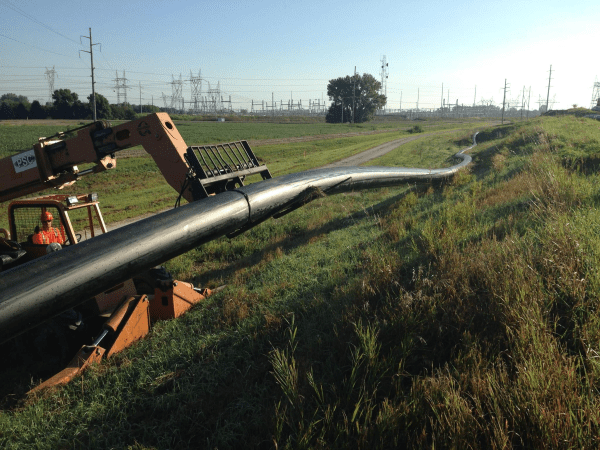Oct . 20, 2024 23:49 Back to list
Comparing PPR and PVC Pipe Products for Optimal Plumbing Solutions
Understanding the Differences Between PPR and PVC Pipes A Comprehensive Overview
When it comes to plumbing and piping solutions, two of the most commonly used materials are PPR (Polypropylene Random Copolymer) and PVC (Polyvinyl Chloride) pipes. Both materials have their unique advantages and applications, but choosing the right one for your project can make a significant difference in terms of durability, cost-effectiveness, and suitability for specific uses. This article will explore in-depth the features, benefits, and drawbacks of PPR and PVC pipes, helping you make an informed decision.
Material Composition
PPR pipes are made from a thermoplastic polymer, specifically polypropylene, while PVC pipes are made from a mixture of ethylene and chlorine. This fundamental difference in material composition results in varied properties that impact their respective performance. PPR pipes are known for their excellent resistance to thermal shock and chemical corrosion, making them suitable for hot and cold water distribution systems. Conversely, PVC pipes are more rigid and have good resistance to impact, environmental stress, and aging, often making them more suitable for drainage and sewage systems.
Temperature and Pressure Resistance
One of the standout features of PPR pipes is their ability to withstand higher temperatures. PPR pipes can operate at temperatures up to 95 degrees Celsius (203 degrees Fahrenheit) without significant loss of structural integrity. This makes them ideal for hot water applications, such as residential plumbing systems and industrial processes that require a reliable supply of heated water.
On the other hand, PVC pipes are generally limited to a maximum temperature of around 60 degrees Celsius (140 degrees Fahrenheit). While this is sufficient for many applications, it can be a critical disadvantage when hot water transport is involved. Additionally, PVC pipes may become brittle when exposed to extreme temperatures, leading to potential failure in very cold environments.
Chemical Resistance
Both PPR and PVC pipes exhibit good resistance to various chemicals, but their effectiveness can vary depending on the specific substances involved. PPR pipes are particularly resistant to acids and alkalis, making them suitable for use in chemical processing plants, laboratories, and agricultural applications.
PVC pipes, while offering good resistance to many chemicals, can be negatively affected by certain solvents and oils. This chemical susceptibility may limit their application in industries where exposure to aggressive substances is common.
ppr pipe vs pvc pipe products

Installation and Maintenance
When it comes to installation, PPR pipes generally require specialized equipment for their fusion welding process, which creates a strong, seamless joint. While this method ensures excellent durability and a leak-free connection, it can be more labor-intensive and may require trained personnel for installation.
In contrast, PVC pipes are typically easier to work with, thanks to their solvent cement joining system. This allows for quicker and more straightforward installations, making them a popular choice for DIY projects and less experienced installers. Additionally, PVC pipes tend to be lighter than PPR pipes, contributing to easier transport and handling.
Cost Considerations
From a cost perspective, PVC pipes are generally cheaper than PPR pipes. The lower material cost and easier installation contribute to the overall affordability of PVC solutions. However, while the initial investment in PPR pipes may be higher, their long-term durability and lower maintenance requirements can offset the initial cost over time, particularly in demanding applications.
Environmental Impact
When considering the environmental impact of these materials, PVC is often criticized for its production processes and potential release of harmful chemicals upon degradation. PPR, as a fully recyclable material, has won favor in eco-conscious projects.
Conclusion
In summary, both PPR and PVC pipes offer unique benefits and limitations, making them suitable for different applications. PPR pipes shine in high-temperature and chemical-resistant setups, while PVC pipes excel in ease of installation and cost-effectiveness. Ultimately, the choice between PPR and PVC will depend on specific project requirements, budget constraints, and long-term goals. By assessing your needs carefully, you can select the piping solution that best fits your situation, ensuring lasting functionality and performance in your plumbing system.
-
Durable UPVC Column Pipes for Submersible Pumps | Efficient Water Flow
NewsAug.14,2025
-
DN100 PVC Well Casing Pipes - Durable & Corrosion-Resistant
NewsAug.13,2025
-
Flexible 32mm HDPE Pipes in Coil | Durable Water & Gas Lines
NewsAug.12,2025
-
DN50 HDPE Pipes in Coils: Flexible, Durable & Easy Install
NewsAug.11,2025
-
32mm HDPE Pipes in Coil: Durable, Flexible, Easy Install
NewsAug.10,2025
-
140mm PVC Drilling Pipe: Durable & Efficient Well Casings
NewsAug.09,2025

